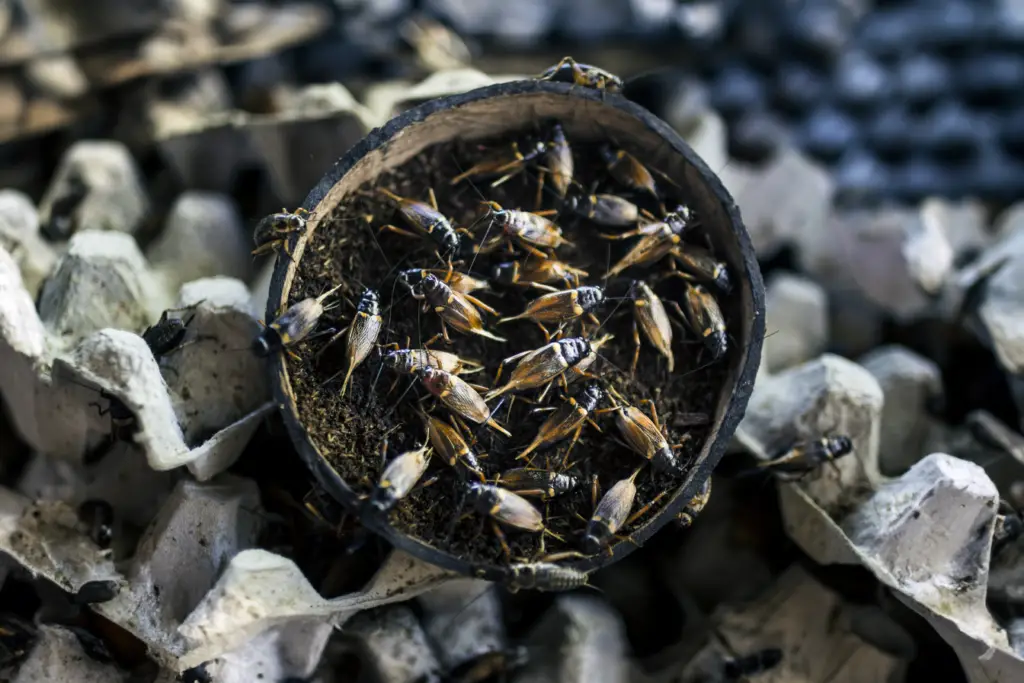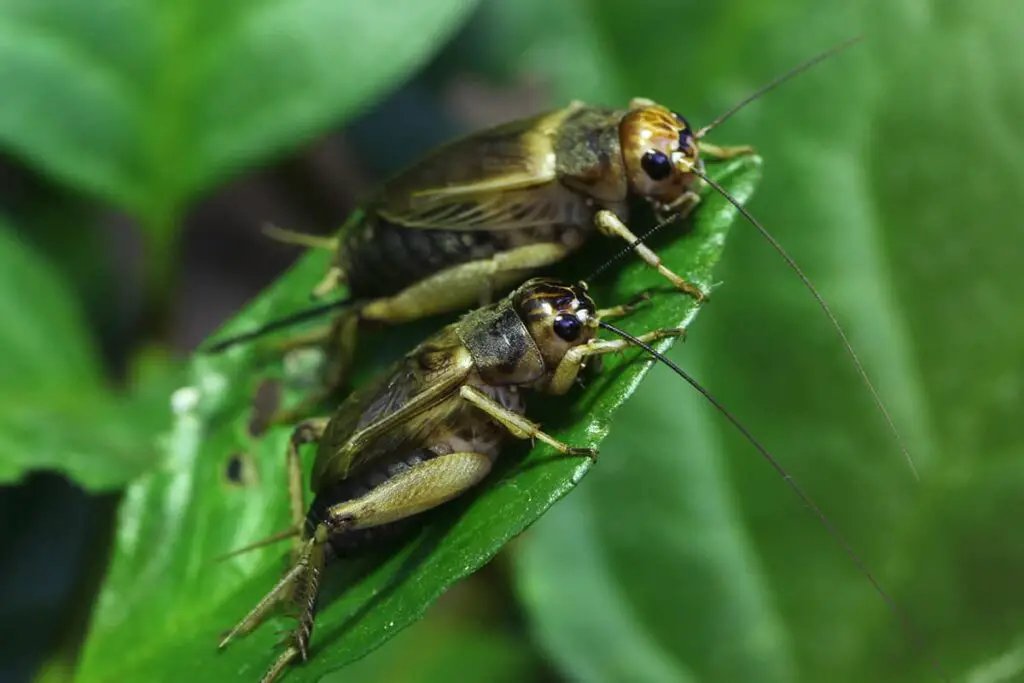
Keeping crickets as feed for your pets or as chirpy companions requires knowing the right feeding routine to ensure they are healthy and nutritious for their prospective predators. Understanding how often to feed your crickets is essential, as it can impact their longevity and quality. Just like any other pet, crickets have dietary needs that must be met with the right frequency and nutrition.
Finding the balance in feeding schedules is key. If you feed them too seldom, crickets might not get sufficient nourishment, affecting their health and vitality. Conversely, overfeeding can lead to waste accumulation and can create an unhealthy habitat. Generally, feeding your crickets every other day should suffice, but this can vary depending on the number of crickets and their size.
The diet you provide is equally important. Crickets thrive on a variety of fruits, vegetables, and grains. Offering a blend of these foods, complemented by commercial cricket food or nutrient-rich feed, will not only keep them fed but also ‘gut load’ them, which means they’ll pass on those nutrients to whatever animal ends up eating them. Adapting a schedule and sticking to it will keep your crickets chirping and your pets, if you have some, well-fed.
Understanding Cricket Nutritional Needs
Knowing what nutrients crickets require will help you maintain their health and, in turn, the health of the animals that feed on them.
Nutritional Components
Crickets need a balanced diet rich in proteins, carbohydrates, and fats. Proteins are vital for their growth and development, while carbohydrates provide them with energy. Fats are important but should be given in moderation. Additionally, vitamins and minerals are essential, with a focus on calcium, which is crucial for developing strong exoskeletons in the crickets themselves and the reptiles that consume them. You can learn more about the importance of these components through the feeding crickets guide.
- Proteins: Essential for growth; sources can include commercial cricket feed or fish flakes.
- Carbohydrates: Provide energy; often from fruits and vegetables.
- Fats: Important for nutrient storage; typically found in small amounts in cricket diets.
- Vitamins and Minerals: Crucial for overall health, particularly calcium.
Life Stage Dietary Requirements
Cricket dietary needs vary as they grow. Younger crickets, known as nymphs, require more protein to support their rapid growth and frequent molting. As crickets mature, their protein needs decrease slightly, but a balanced diet is still key.
- Nymphs: Increased protein content helps support their growth spurts.
- Adults: Balanced nutrition maintains health and enhances breeding potential.
By understanding these requirements, you can ensure that the crickets you are raising are not just surviving, but thriving.
Feeding Frequency Basics
Feeding your crickets the right amount at consistent intervals is crucial for their health. For adult and juvenile crickets, different feeding frequencies apply.
Adult Crickets
As an owner of adult crickets, you should provide fresh food every 24 to 48 hours. Ensure that any uneaten food is removed before adding more to prevent mold and spoilage. Crickets are also known to graze continuously, so a constant supply of fresh food will help maintain their health and vitality. Additionally, a source of moisture is necessary, but avoid open water containers to prevent drowning.
Juvenile Crickets
For juvenile crickets, or ‘pinheads’, frequent feeding is crucial due to their rapid growth. Offer a fresh food supply daily and in smaller quantities to accommodate their smaller sizes and appetites. It’s essential to keep their environment clean, so routinely remove any old or uneaten food to maintain optimal health conditions for your growing crickets.
Best Practices for Cricket Feeding
Providing optimal nutrition for your crickets is crucial for their health and, if you’re using them as feed, the health of the animals that consume them. A balanced diet and proper feeding routines ensure energetic and nutritious crickets.
Types of Feed
Your crickets require a diet rich in proteins, vitamins, and minerals. Start with high-quality cricket feed that is commercially available, tailored to fulfill the nutritional requirements of your crickets. Supplement this with fresh fruits and vegetables such as apples, carrots, and potatoes for added nutrients and moisture. Some keepers also include alfalfa, grains like oatmeal, and chicken feed for variety.
Feeding Techniques
Feed your crickets in a shallow dish to make the food accessible and reduce waste. Offer food in the evening, as crickets are largely nocturnal and will feed more actively at night. Remove uneaten fresh food within 24 hours to prevent mold and bacterial growth. For feeder crickets, consider gut loading—a method where you feed the crickets nutrient-rich foods 24 to 48 hours before they are fed to other animals, enhancing their nutritional value.

Hydration and Water Sources
Crickets need a source of moisture, but standing water can lead to drowning or disease. Instead, provide hydration through wet sponges, water gel, or water crystals that your crickets can drink from without risk. Make sure to replace these when they become dirty or dried out.
Frequently Asked Questions
Caring for your cricket colony involves understanding their dietary needs and feeding patterns. Below are some commonly asked questions to help you maintain a healthy cricket population.
What type of diet is best for maintaining healthy crickets?
A balanced diet for crickets should include grains, fruits, and vegetables, supplemented with a nutritional supplement to fill any gaps. This ensures they get all the necessary nutrients.
How can I properly gut load crickets before feeding them to my reptiles?
To gut load crickets, feed them nutrient-rich foods 24-48 hours before offering them to your reptiles. This process ensures the crickets are packed with beneficial nutrients for your pets. More detailed care, maintenance, and feeding tips can enhance the benefits of gut loading.
What are some safe fruits I can offer to my crickets?
Crickets can be fed a variety of fruits such as apples, bananas, and melons. Ensure the fruits are fresh and free from pesticides to promote health and longevity in your crickets.
What are some common feeding mistakes to avoid with crickets?
Avoid overfeeding, which can lead to mold growth and unhealthy living conditions. Also, do not give your crickets overly processed foods or those high in fat and sugar. Sticking to a natural diet is key to keeping crickets thriving.
How do I create a sustainable feeding schedule for my cricket colony?
Establish a regular feeding routine that aligns with their life cycle stages. Adult crickets don’t need to eat as often as younger ones. Create a schedule based on their age and nutritional needs.
What is the ideal food storage method to ensure cricket longevity?
Store cricket food in a cool, dry place to prevent spoilage. Foods like grains and cereal can be kept refrigerated to extend freshness and reduce waste.
Driven by a passion for those tiny creatures that rule our world, we at Bug Domain strive to be your go-to resource for information on insects.




